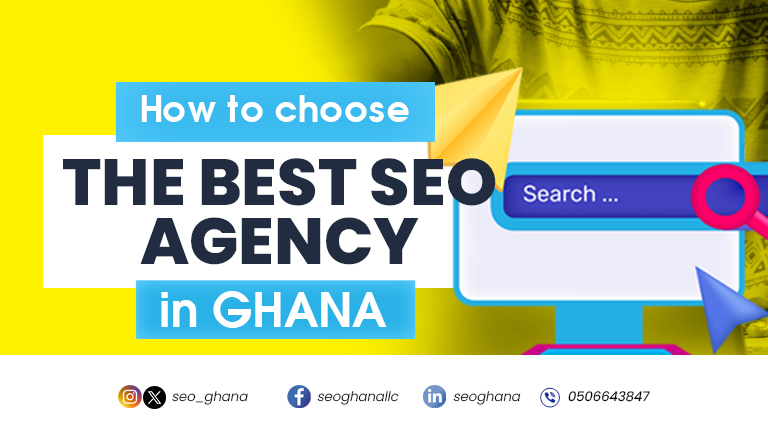
In today’s digital age, having a strong online presence is no longer optional; it’s essential for business growth. Search Engine Optimization (SEO) plays a critical role in ensuring your business appears in search results when potential customers look for your products or services. But how do you choose the best SEO agency in Ghana to meet your needs? Let’s explore the key factors to consider.
1. Understand Your Business Goals
Before you start the hunt for an
SEO agency, clearly define what you want to achieve. Are you looking to improve your website’s ranking for specific keywords, drive organic traffic, or boost local visibility in Ghana? Knowing your goals will help you communicate your needs and evaluate the agency’s expertise.
2. Look for Experience in the Ghanaian Market
The best SEO agency for your business will have in-depth knowledge of the local market. They should understand:
- Ghana’s digital landscape and consumer behavior.
- Local keywords and phrases that resonate with your target audience.
- Strategies to improve visibility in Ghanaian search engines like Google Ghana.
An agency with experience working with businesses in Ghana will likely deliver better results tailored to your market.
3. Check Their Track Record
Ask potential agencies for case studies, testimonials, or references from previous clients. A reputable SEO agency will proudly showcase their success stories. Look for measurable results like:
- Increased website traffic.
- Improved search engine rankings.
- Enhanced lead generation and conversion rates.
4. Evaluate Their Services
SEO is multifaceted, covering areas such as keyword research, content creation, technical SEO, link building, and analytics. Ensure the agency offers a comprehensive range of services that align with your business goals. Some key questions to ask include:
- Do they conduct thorough website audits?
- How do they approach on-page and off-page optimization?
- Do they provide content creation services tailored to the Ghanaian audience?
5. Transparency and Communication
A good SEO agency will keep you informed every step of the way. Look for an agency that provides:
- Regular updates and detailed reports.
- Clear explanations of their strategies.
- Open lines of communication for questions and feedback.
Avoid agencies that promise instant results or use jargon without explaining their processes.
6. Avoid Black Hat Practices
While quick fixes might seem tempting, unethical SEO practices (like keyword stuffing or buying links) can harm your website’s reputation and ranking in the long run. Choose an agency that prioritizes sustainable, white-hat strategies that comply with search engine guidelines.
7. Compare Pricing and Value
SEO is an investment, and while it’s essential to work within your budget, the cheapest option isn’t always the best. Compare pricing structures and assess the value offered. A reliable SEO agency will offer packages or services tailored to your budget while delivering results.
8. Seek Personalized Strategies
Your business is unique, and your SEO strategy should be too. Avoid one-size-fits-all solutions. The right agency will take the time to understand your brand, industry, and audience, crafting a custom strategy to meet your goals.
9. Look for Long-Term Partnerships
SEO is not a one-time effort; it requires ongoing optimization and adaptation to stay ahead of competitors. Choose an agency that demonstrates a commitment to long-term success and is ready to grow with your business.
10. Read Online Reviews and Ratings
Customer feedback can provide valuable insights into an agency’s performance. Check online reviews on platforms like
Google My Business,
Clutch, or social media. Pay attention to both positive and negative reviews to get a balanced perspective.
HERE’S A WAY FORWARD
Choosing the right SEO agency can be a game-changer for your business, and at our agency, we pride ourselves on delivering results that matter. With a deep understanding of the latest SEO trends, techniques, and tools,
we tailor strategies specifically to your goals, ensuring your brand stands out in a competitive online space.
What sets
us apart is our personalized approach. We believe in clear communication, transparent reporting, and continuous optimization to keep your website ranking high and driving organic traffic. Whether you’re looking to increase brand awareness, improve search engine rankings, or boost conversions, we’re here to help you achieve your digital marketing goals with proven SEO strategies.
Partner with us today, and let’s take your online presence to the next level!

